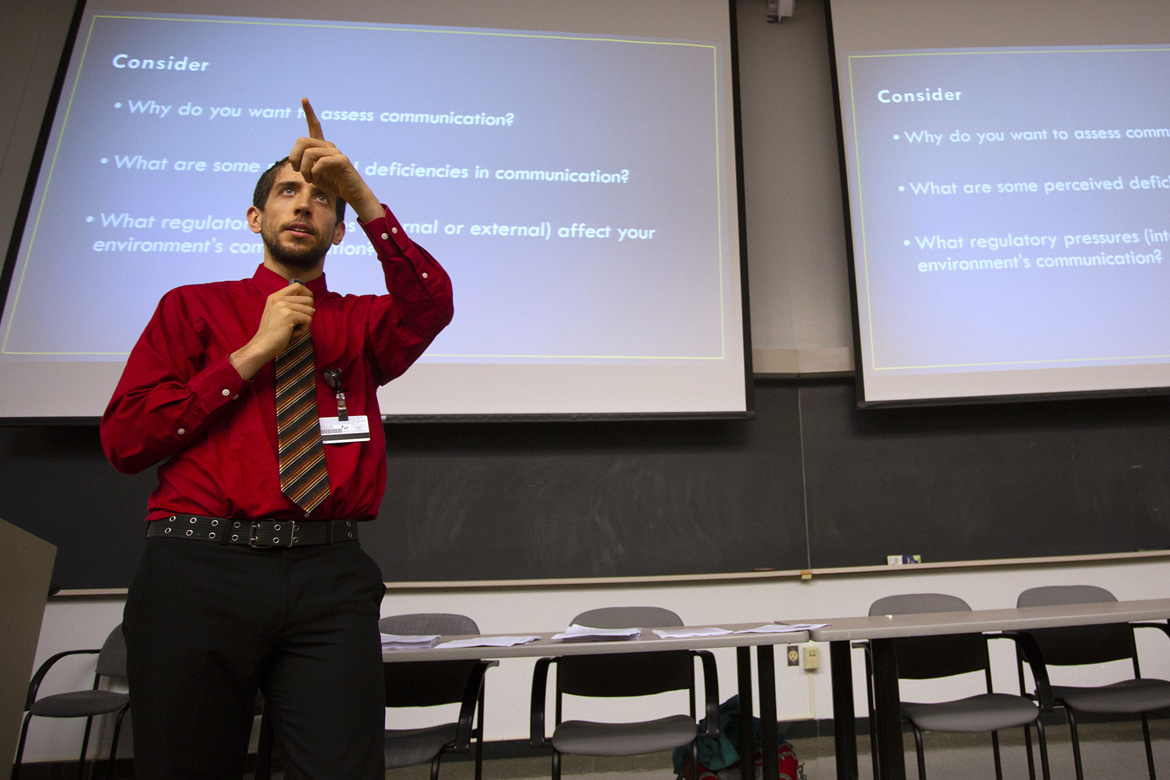You can make the right diagnosis, order the right treatments and have your patient well on the way to a safe discharge from the hospital. But now you need to get what’s scattered across the medical record and buried inside your brain into the hands and heads of your colleagues on the next shift. That patient handoff is where problems often arise. Learn from an expert what you can do to make sure it goes well.
“Communication errors come up time and time again as a reason unnecessary harm comes to patients. It’s the exact opposite of what we are trying to do,” said Joshua Davis, MD, a second-year emergency medicine resident at Penn State Milton S. Hershey Medical Center. He spoke at the AMA Accelerating Change in Medical Education learner-led meeting, Patient-Centered Care in the 21st Century-Health Systems Science Through the Medical Education Continuum.
Dr. Davis has researched communication problems during patient handoffs. He offered these tips to medical residents to make handoffs more effective.
Communicate the unique needs of each patient
“Regardless of what specialty you practice, you are used to dealing with certain types of patients,” Dr. Davis said. “For example, cardiologists, if they are handing off all their patients, and they are on the sixth patient who is a 50-year-old man with chest pain, eventually they all start to blend together. You want to make sure you hit the salient and important information that a provider needs. What is different and special about this patient?
“The other thing that is important is situational awareness, which is the if/then statements. So if ‘X, Y, Z’ happens, then do this. You can tailor that to the patient by anticipating what might happen with the person you are giving the handoff to.”
Keep circumstances in mind
It’s also important to keep in mind the handoff’s context, Dr. Davis said.
“Are you signing out someone for another physician to cover overnight? Then you’ll get the patient back tomorrow? For me [in emergency medicine], a lot of the handoffs we do I am permanently signing away my patients.
“When I sign my patients off to a hospitalist or whatever specialist, I’m likely never taking care of that patient again,” he said. “So, I may need to be a little more detailed, whereas someone who is signing out overnight may not need as much detail in terms of history and things. But they may focus more on the situational awareness.”
Prioritize handoffs
Residents “must recognize that handoffs are high-risk time,” Dr. Davis said. “It’s not the time to be taking pages from nurses on things that aren’t emergent. It should be a dedicated time and should involve focus.
“Prepare yourself, make sure you are focused on having all the key information. I find that having everything written down helps. If there’s a lag between when I call to give someone a report and when I get a call back to give it, I may have done one thing or three things in that time.
“It’s my practice to have it all written down—brief notes to myself that nobody is going to see that cue me into what are the important things that I need to remember to say about this patient.”
Follow protocol
The hospital or health system where you are working should have an established, uniform procedure for patient handoffs, Dr. Davis said. If it doesn’t, “you can approach your program or institution about having a standardized approach,” he said.
“It’s also important to make sure that everybody recognizes that approach and sticks to it. You can do your best during the handoff to model it and pay attention to [the protocol].”




